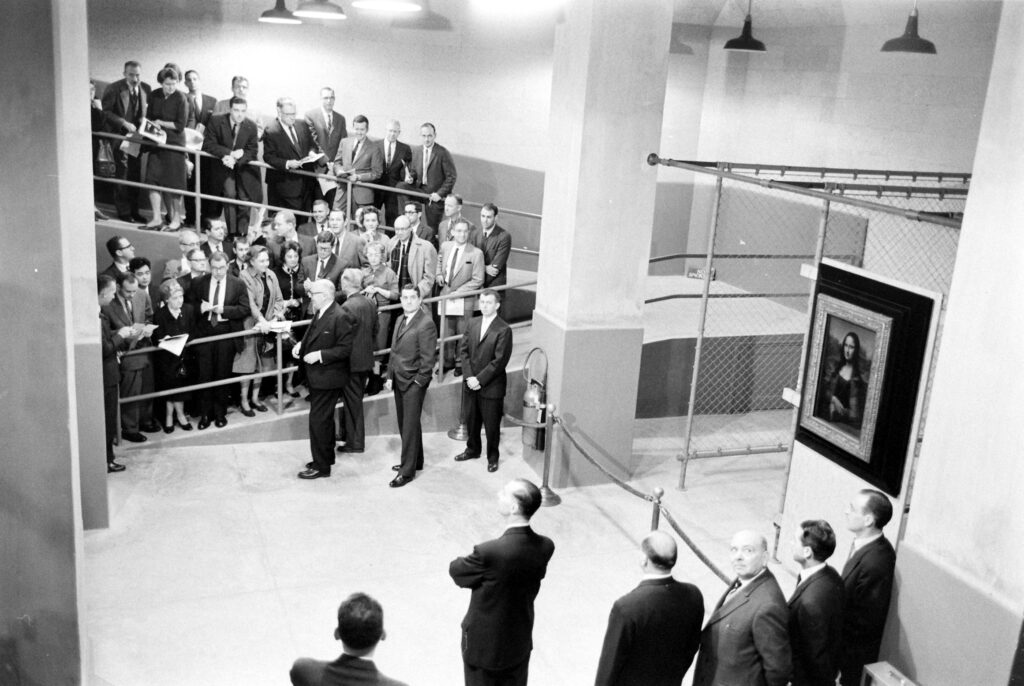The United States Supreme Court landmark Brown v. Board of Education decision in 1954 that declared “separate educational facilities are inherently unequal,” setting the stage for the desegregation of all of America’s public schools. But integration didn’t happen overnight. In fact, in many places around the country, it took years.
The most often cited and arguably the most memorable integration battle took place in 1957, in Arkansas, when the Little Rock Nine entered high school—after President Dwight Eisenhower federalized the Arkansas National Guard and, incredibly, sent in troops from the storied 101st Airborne to ensure the teens’ safety. But the drama and tension so evident in Little Rock also played out—albeit with less firepower on hand—in schools around the country for years after Brown v. Board of Education.
Here, LIFE.com remembers one of those post-Little Rock battles: the integration of high schools in Virginia five long years after the Supreme Court’s unanimous ruling. In February 1959, the state’s governor, J. Lindsay Almond, reluctantly abandoned his carefully choreographed “massive resistance” to integration—including the closing of schools and keeping thousands of kids out of class in an attempt to forestall desegregation. Shortly thereafter, 21 African-American students began attending classes in Norfolk and Arlington. LIFE photographers Paul Schutzer and Ed Clark were there, in Norfolk, when 17 of those students made history.
LIFE’s coverage of the integration of the Norfolk schools painted a relatively rosy picture of what the magazine called the “calm and hopeful integration start” in Virginia.
“The peaceful transition,” LIFE wrote in its Feb. 16, 1959, issue, “went a long way to restore the climate of inevitability of integration in the South, which had been badly disturbed a year and half ago by violence and diehard defiance in Little Rock.” (That same issue of LIFE, unfortunately, also repeatedly misidentified one of the Norfolk students, 15-year-old Louis Cousins, as “Lewis” Cousins.)
Despite LIFE’s optimistic characterization of the “peaceful transition,” it’s worth noting that many of the students later recalled their experiences as hurtful, isolating and confusing, even if they kept up a brave front for the cameras — and, perhaps more importantly, for their white peers.
All these years later, their courage still astounds.

Seventeen of the African American students who were ordered admitted to white schools in Norfolk, Va., posed for a photo at a church where they had been getting private schooling, 1959. Upper row: Andrew Heidelberg, Louis Cousins, Patricia Godbolt, Carol Wellington, Reginald Young, Freddy Gonsouland, Edward Jordan, Olivia Driver; lower row: Betty Jean Reed, Johnnie Rouse, Delores Johnson, LaVera Forbes, James Turner Jr., Lolita Portis, Patricia Turner, Claudia Wellington, Geraldine Talley.
Ed Clark The LIFE Picture Collection/Shutterstock

Betty Jean Reed was the only black student at Granby High School in Norfolk, Va., 1959.
Ed Clark The LIFE Picture Collection/Shutterstock

Betty Jean Reed, Norfolk, Va., 1959.
Paul Schutzer The LIFE Picture Collection/Shutterstock

Alone in line, Betty Jean Reed tensely waited for lunch at Granby High cafeteria as other students ignored her.
Paul Schutzer The LIFE Picture Collection/Shutterstock

Betty Jean Reed, Granby High School, Norfolk, Va., 1959.
Paul Schutzer The LIFE Picture Collection/Shutterstock

Betty Jean Reed talked on the phone with a friend during her first week as the only African American student at Granby High School, Norfolk, Va., 1959.
Paul Schutzer The LIFE Picture Collection/Shutterstock

Betty Jean Reed studied at home, Norfolk, Va., 1959.
Paul Schutzer The LIFE Picture Collection/Shutterstock

Granby High School student Betty Jean Reed and her mother, Norfolk, Va., 1959.
Paul Schutzer The LIFE Picture Collection/Shutterstock

Six of the “Norfolk 17” students who integrated Virginia schools in 1959: Lower row: LaVera Forbes, Freddy Gonsouland, Johnnie Rouse; upper row: Lolita Portis, James Turner Jr., Claudia Wellington.
Ed Clark The LIFE Picture Collection/Shutterstock

Journalists covered the desegregation of Norfolk schools, 1959.
Ed Clark The LIFE Picture Collection/Shutterstock

Desegregation of Norfolk, Va., public school, 1959.
Ed Clark The LIFE Picture Collection/Shutterstock

Desegregation of Norfolk, Va., public school, 1959. Students: Olivia Driver, Freddy Gonsouland.
Ed Clark The LIFE Picture Collection/Shutterstock

Three of the “Norfolk 17” students who integrated Virginia schools in 1959: (left to right) Delores Johnson, Reginald Young, Carol Wellington.
Ed Clark The LIFE Picture Collection/Shutterstock

Patricia Godbolt ate lunch alone, Norview High School, Norfolk, Va., 1959.
Ed Clark The LIFE Picture Collection/Shutterstock

Journalists covered the desegregation of Norfolk schools, 1959.
Ed Clark The LIFE Picture Collection/Shutterstock

Desegregation of Norfolk, Va., public school, 1959. Students: Freddy Gonsouland, Patricia Godbolt.
Ed Clark The LIFE Picture Collection/Shutterstock

Six of the “Norfolk 17” students who integrated Virginia schools in 1959: Lower row: Patricia Godbolt, Andrew Heidelberg, Olivia Driver; upper row: Geraldine Talley, Edward Jordan, Patricia Turner.
Ed Clark The LIFE Picture Collection/Shutterstock

Fifteen-year-old Louis Cousins, the only black student to attend Maury High School, Norfolk, Va., 1959.
Paul Schutzer The LIFE Picture Collection/Shutterstock

Fifteen-year-old Louis Cousins, the only black student to attend Maury High School, Norfolk, Va., 1959.
Paul Schutzer The LIFE Picture Collection/Shutterstock

Fifteen-year-old Louis Cousins, Maury High School, Norfolk, Va., 1959.
Paul Schutzer The LIFE Picture Collection/Shutterstock

Louis Cousins ordered lunch in cafeteria at newly desegregated Maury High School, Norfolk, Va., 1959.
Paul Schutzer The LIFE Picture Collection/Shutterstock

A white student stopped to speak with Louis Cousins at newly desegregated Maury High School, Norfolk, Va., 1959.
Paul Schutzer The LIFE Picture Collection/Shutterstock

Fifteen-year-old Louis Cousins, the only black student to attend Maury High School, Norfolk, Va., 1959.
Ed Clark The LIFE Picture Collection/Shutterstock

Alveraze “Freddy” Gonsouland (hand on cheek) at home with his half-brother and mother, Norfolk, Va., 1959.
Ed Clark The LIFE Picture Collection/Shutterstock

At home, integrated pupils Alveraze Gonsouland and half-brother tossed a ball.
Ed Clark The LIFE Picture Collection/Shutterstock

Freddy Gonsouland, reading his Spanish lesson, said he was “studying like never before.”
Ed Clark The LIFE Picture Collection/Shutterstock











































































































































































































































































![An East German teen hid in tall grass, awaiting a chance to jump over the Berlin Wall. "Crouching in a tangle of grass in East Berlin," wrote LIFE when this escape sequence originally ran in he magazine, "and hidden except for his face [barely visible on the left side of the pic], a boy waits to make a break over the wall he must surmount to reach the West. Nearby is a patrol of East German Vopos who will shoot to kill if they see him." An East German teen hides in tall grass awaiting a chance to jump over the Berlin Wall](https://static.life.com/wp-content/uploads/migrated/2012/01/177-1024x763.jpg)







































































































